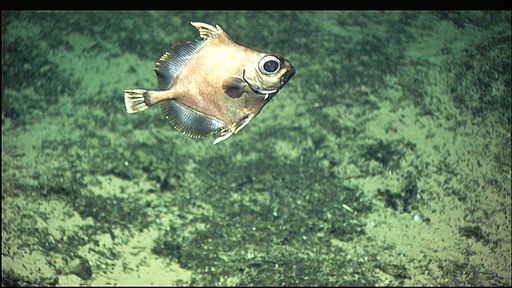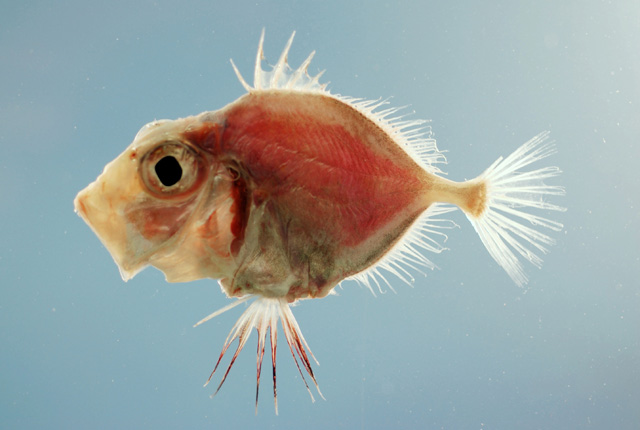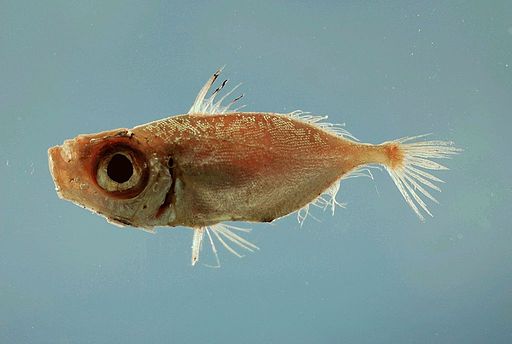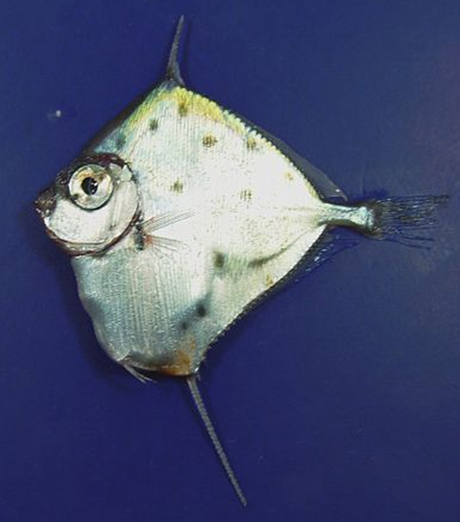Zeiformes: Dories
No, this isn't the character from Finding Nemo. These fishes have a compressed, deep body plan and have highly distensible jaws. There are a few other distinguishing features but most are osteological so we won't mention them here.
Cyttoidei: Lookdown Dories
There is one family, Cyttidae, with one genus, Cyttus, with three species. This family is distinguished by its lack of large "buckler" scales near the dorsal and anal fins.
Zeioidei
Yeah...this group includes all the dories except the cyttids. So let's keep it moving.

By NOAA Photo Library (expl1205) [CC BY 2.0 or Public domain], via Wikimedia Commons
Oreosomatidae: Oreos
What is the ocean's favorite cookie? OREOS! These fishes have an upturned, protractile mouth, along with large eyes and prominent fin spines.

By Noble, Brandi, Provided fish pictures from the NOAA photo library. [Public domain], via Wikimedia Commons
Parazenidae: Smooth Dories
This group is pretty nondescript, even among the relatively nondescript dories. They have a few spines in every fin, except the pelvics.

By SEFSC Pascagoula Laboratory; Collection of Brandi Noble, NOAA/NMFS/SEFSC. (NOAA Photo Library: fish4513) [CC BY 2.0 or Public domain], via Wikimedia Commons
Zeniontidae: Armoreye Dories
Most fish scales are rounded...but these few fishes have scales that are rounded...to squarish! Astounding!

By NOAA's Fisheries Collection [Public domain], via Wikimedia Commons
Grammicolepididae: Tinselfishes
I'm not completely sure how these fishes earned their name. They do have the fish version of a mohawk, with the dorsal fin spines elevated as spikes.

By Izuzuki (http://www.izuzuki.com/) [CC BY-SA 3.0], via Wikimedia Commons
Zeidae: Dories
Similar to the cyttids, this family also contains fishes that have large buckler scales. There is usually a concave curve to the head, with a hump usually located right behind the eyes.